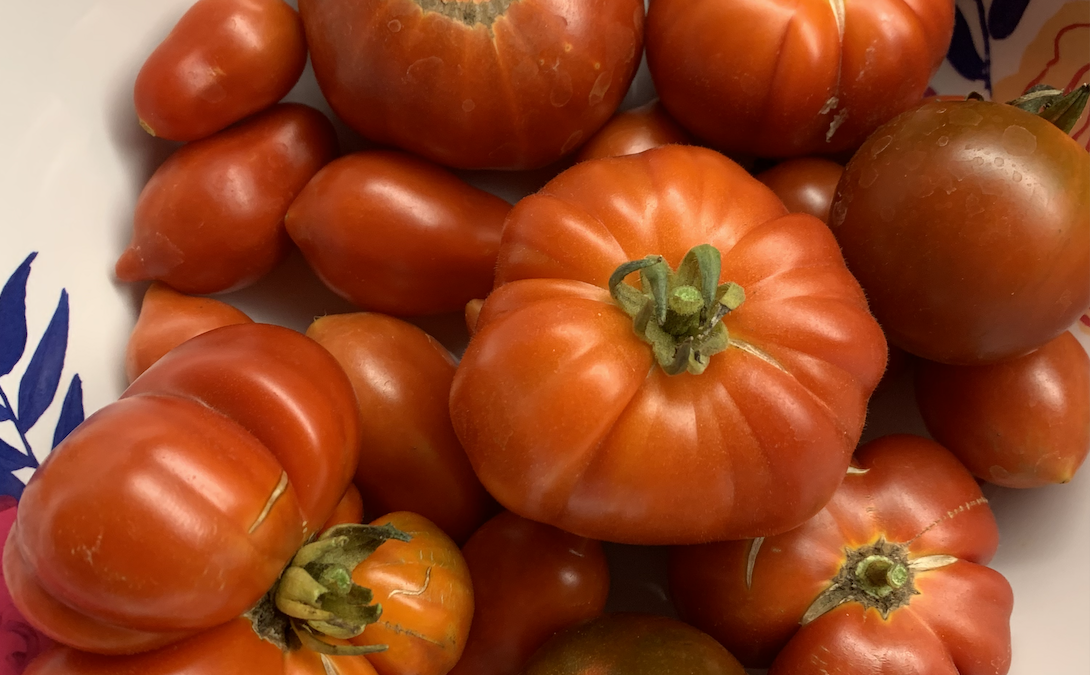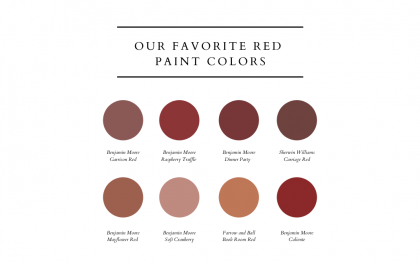Now is the time to plant everyone’s favorite summer crop, tomatoes! From canning to salads to right off the vine, these versatile fruits are an easy-to-grow and delicious addition to your garden. Here are a few quick tips to help you have a fruitful harvest.
- Tomatoes need space. If you are planting in a pot, only plant one seedling per container. If you are planting in a bed, a general rule is to plant them 24 inches apart. But this depends on your variety, so be sure to check the plant tag for more specific recommendations.
- Plant tomatoes deeper than they come in their nursery pot, all the way up to the bottom leaves. This helps the plant develop deeper and stronger roots.
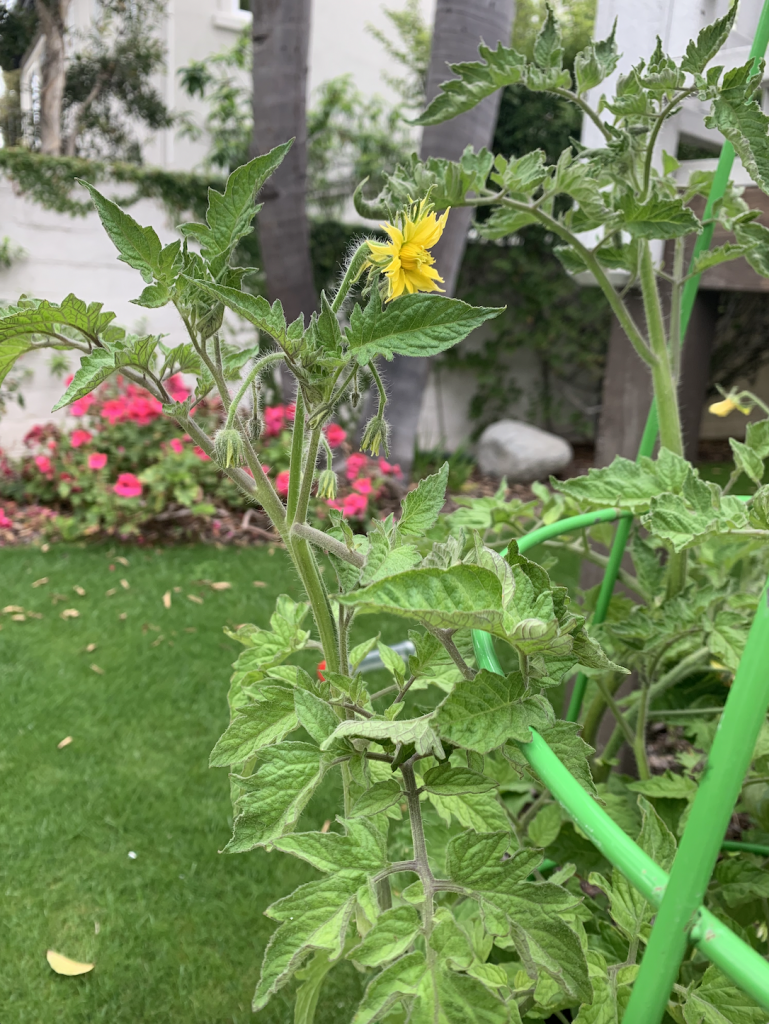
- Choose either a tomato cage or stakes to place around your young plant. As it grows, you can assist it by tying the stalks onto the structure. This keeps the fruit off the ground and prevents the limbs from snapping from rain, wind, heavy fruit, eager harvesters etc.
- As your tomato plant grows, be sure to prune off bottom stems that have leaves touching the soil. When the leaves touch the soil it makes it easier for fungus to grow and bugs to infest the plant.
- Remove suckers as your plant develops. These are the little sprouts that appear in the crook of the main stem and the main stalk. You can just pinch them right off. This enables air and sunlight to reach all parts of the plant and promotes fruit growth on the main limbs.
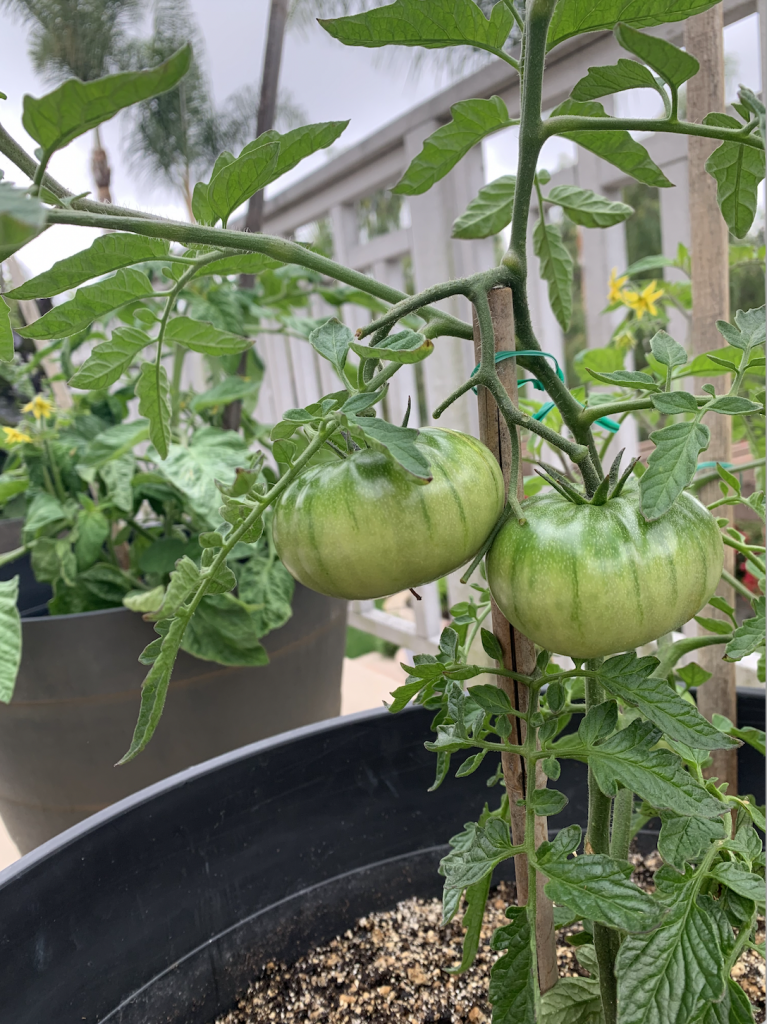
- Plant your tomato in a spot that gets lots of sun, tomatoes thrive in warm weather conditions.
- Be sure to water regularly to avoid fruit splitting and the leaves wilting. Water deeply when the plant is first developing, then weekly as the fruit ripens and as needed on especially hot days. The best time to water is in the morning.
- Choosing the right variety: Indeterminate varieties often take a longer time to develop but produce fruit throughout the growing season, sometimes up to the first frost. They grow taller and more sprawling, (often up to 5 feet) so staking is necessary. Determinate varieties produce one large crop but tend to ripen earlier. They are shorter and more bushy in their growth habit, so they work well in smaller areas.
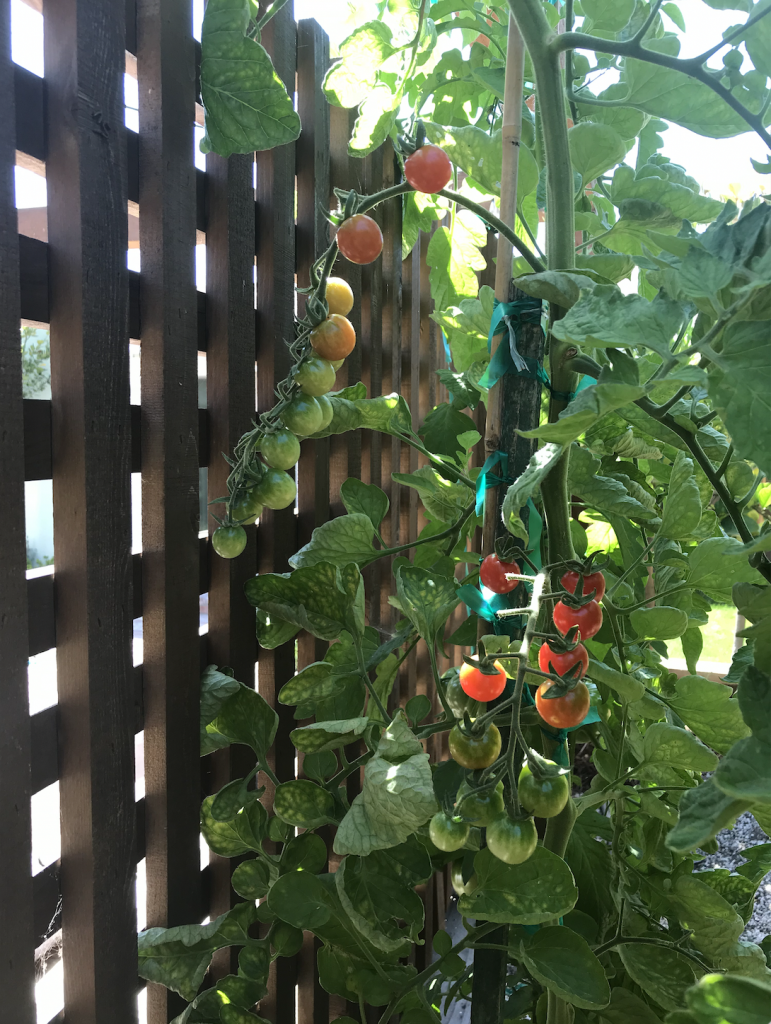
I often choose a mixture of determinate and indeterminate varieties, as well as a mixture of hybrid (more disease resistant and often higher yield) and heirloom (better taste but less disease resistant) varieties. This provides an array of ripening times and fruit types. It also helps in case one of the plants suffers from disease or pests and doesn’t yield any crop that year.
Now it’s time to get out to your local nursery and start planting!
To get customized help with your own garden, book Andrea for The Garden Package.
Andrea Jasper
Related posts
Recent Posts
Flooring Renovation: Asbestos Removal and Choosing the Perfect Floor Stain
We finally completed the renovation of our first-floor flooring, and like most renovations, it was a bit more involved than we initially hoped for. When we bought the house three years ago, we knew the…
Roses are red: 8 beautiful shades of a paint color you might not realize you love
Lots of us love blues, greens, whites, and greys. And if neutrals are more your thing, you might think you need to stay far away from a color like red. But we think it’s worth…

